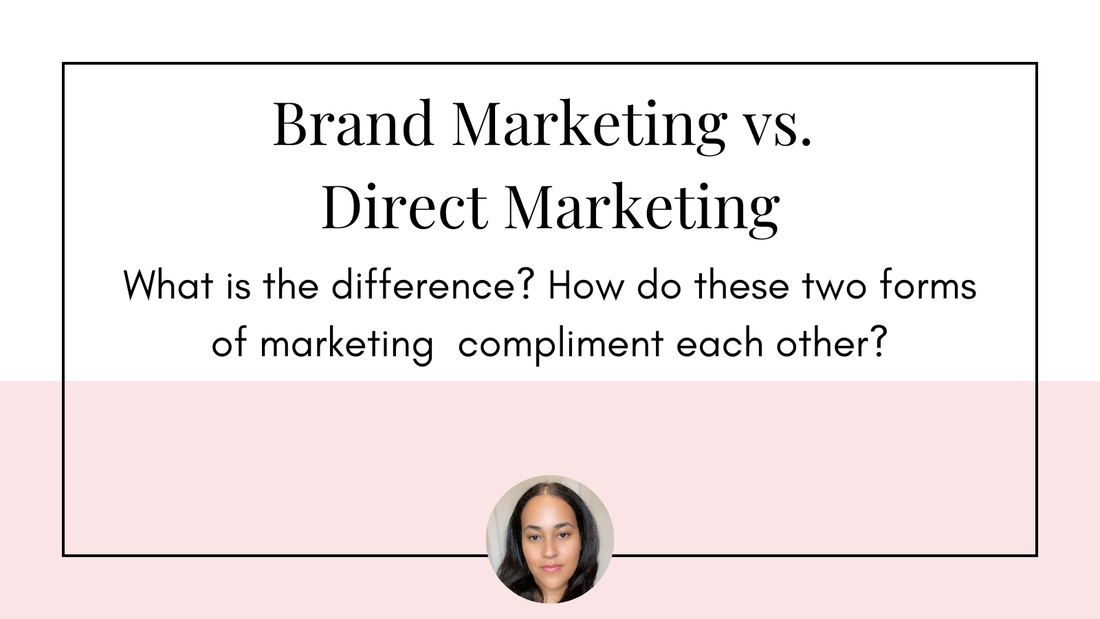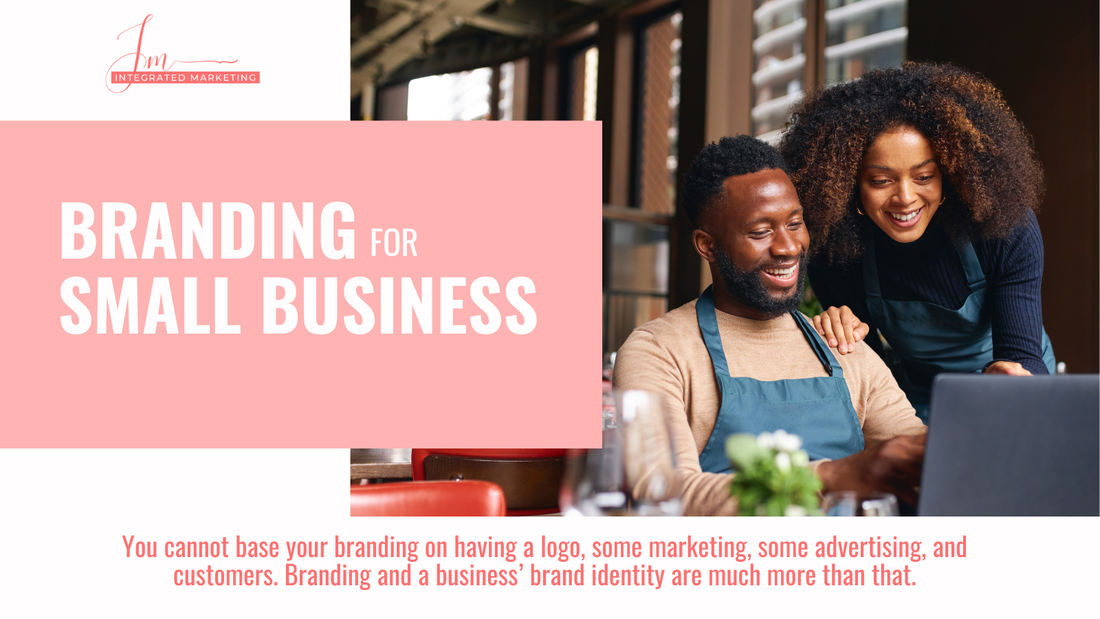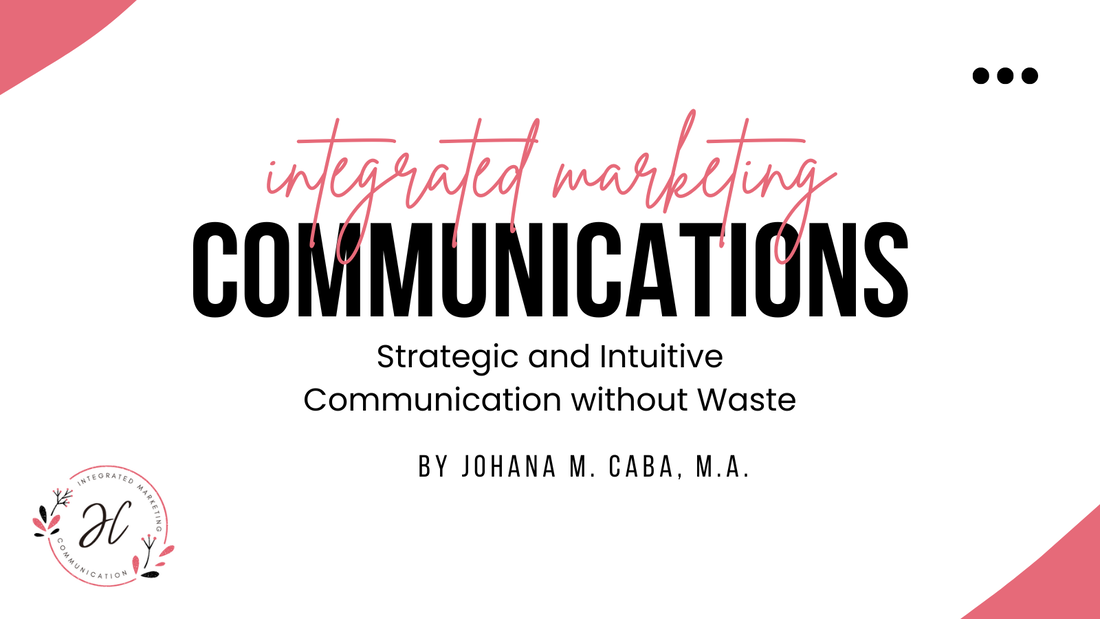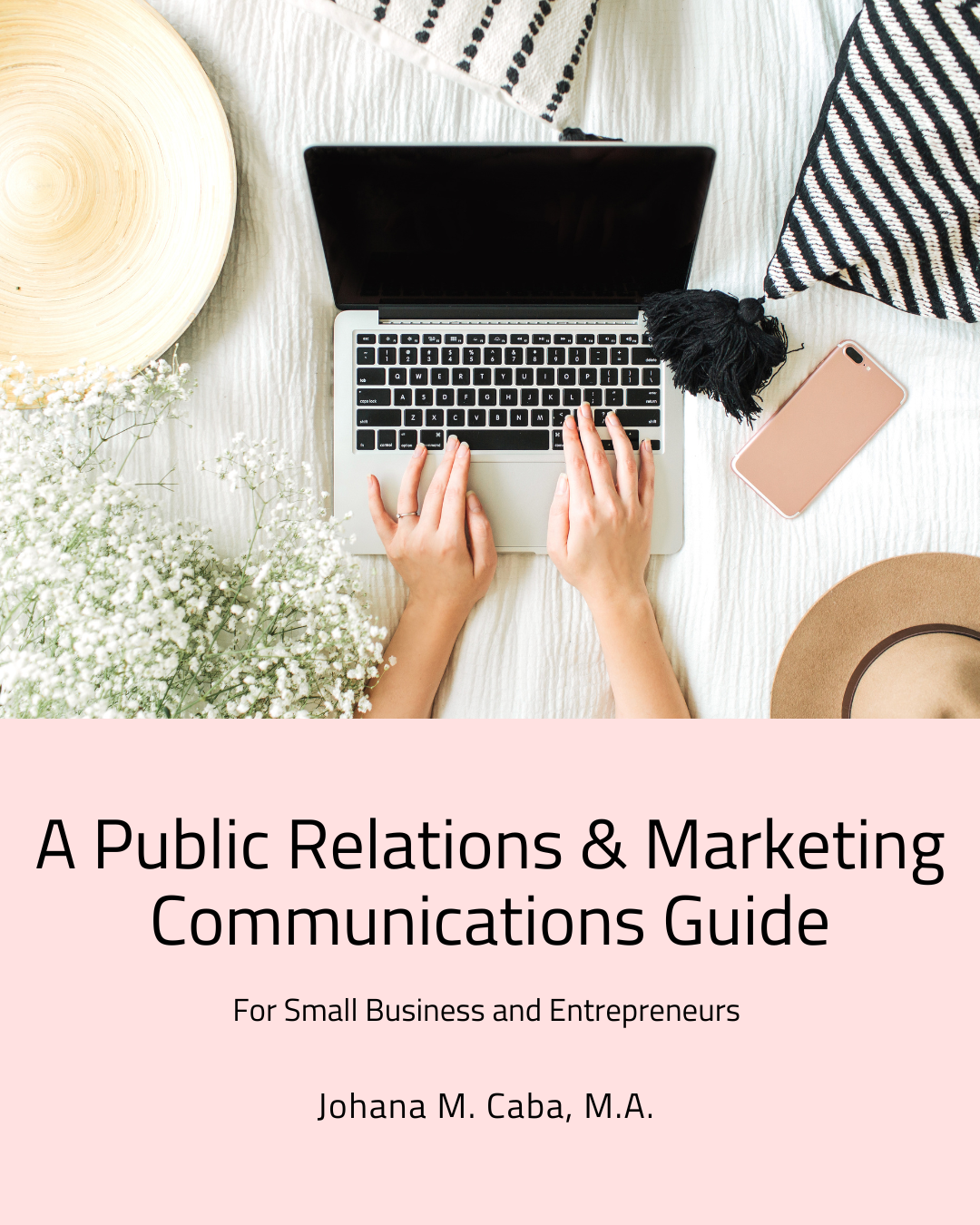|
By: Johana M. Caba, M.A.
As a marketer, it's important to understand the difference. Your Call-to-Action (CTA) will vary depending on the type of campaign you are implementing. You shouldn't ask for the sale CTA when you are implementing a brand campaign or to raise awareness when you are implementing a direct campaign. So, what's the difference? It can be confusing, but you need clarity to avoid getting lost. Brand marketing is about raising awareness and building reputation and community. It's about engagement and building credibility within the target community. Brand marketing campaigns don't have direct KPIs or key performance indicators. They are harder to measure because they are more culturally oriented. Their purpose is to raise awareness about the product or brand through carefully created messages that are conveyed through every point of contact a prospect has with the brand. Direct marketing is about action. These actions can be measured. They are the CTAs. For example, how many sales you made through the campaign or how many people subscribed to your service. The purpose is to make that sale! MAKING AN IMPACT VS. MAKING CASH Brand marketing helps you become top-of-mind for your potential customers or prospects. You are raising awareness about what you offer and about your solution to the problem your audience faces. You are showing them how you work, giving them behind-the-scenes clips, and involving them through engagements on social media. Brand marketing helps your audience feel like they are part of your community, like they have a voice, and like their voice matters to you. Direct marketing is about making that sale. It helps people buy your product. But, there is a catch. While people can simply buy your product because they see it in the grocery store or it's the first thing that pops up on search, most people will do their research first. Without brand marketing, it's hard to make that sale. Your direct marketing needs your brand marketing. You need to raise awareness and build that community before you can sell that product or service. Lastly, how does social media play a part? Social media is an amazing platform for raising awareness and building a community. It is a two-way channel of communication that allows you to communicate directly with your audience, and allows them to communicate directly with you too. On social media, your messages have two purposes that go hand in hand with direct and brand marketing. When you pay for ads to deliver your message to your target audience, your message should encourage direct action (buy, subscribe, sign up). When you earn attention through your messages on social media, your massage should raise awareness. But, don't get caught up on likes and comments to measure success. Many people can see a post, read it, but not like, comment or share. Yes, those are great indicators of your content performance, but they are vanity metrics, you can't focus all your attention on these metrics.
0 Comments
By: Johana M. Caba, M.A.
As a small business, you might think that you already have a brand. And, although that might be true, you cannot base your branding on having a logo, some marketing, some advertising, and customers. Branding and a business’ brand identity are much more than that. Whereas branding is about having a product or service that is distinguishable from other products and services in that category or industry, brand identity consists of the visible elements of the brand like colors, logo, fonts, images, etc. It is the process of creating content and disseminating that content with the brand name, its qualities, personality, identifiable elements, and distinctiveness. According to MarTech, a brand strategy is “built on a platform of differentiation, where a company can use its value proposition to create competitive advantages and satisfy customer needs”. Good branding can increase sales, it increases the value of a company, it can provide employees with direction and motivation, and it can make it easier to attract new customers. We all know that strong branding improves recognition. Think of your favorite brand. For example, we all know Coke from the distinctive red cans and glass bottles, cursive logo, and taste. That’s because Coke is considered a central brand in the soft drinks industry. Central brands are top-of-mind for consumers and they tend to serve as reference points for comparison. According to a Harvard Business Review article on branding, “striking the right balance between centrality and distinctiveness is critical, because a company’s choices influence not just how the brand will be perceived, but how much of it will be sold and at what price - and, ultimately, how profitable it will be.” Branding is important for many reasons, and as a small business owner, you should consider taking a step back and determining if you have a brand strategy. Like I said before, a logo and some marketing are not the same thing as a brand strategy. The most important goal of your strategy is brand awareness. We want a solid, established, clear, and consistent brand across platforms and channels because we want to raise brand awareness within our target audience. On average, it only takes 7 seconds for individuals to form an impression of a brand, and it takes 5-7 impressions to begin recognizing the company logo. And like with everything else in life, first impressions matter. They are vital to developing a loyal customer base. How is brand loyalty formed? One way is by having shared values with your target audience because this helps to increase relatability and foster stronger relationships. How does a brand become more memorable in the minds of consumers? Think of color. Colors help improve the recognition of a brand in consumers’ minds by 80% because color is one of the first things our brains perceive.
So, how can your small business develop a brand strategy to increase recognition and raise awareness about your business?
If we think from a marketing perspective first, think of these questions:
You can continue the process by thinking about the following questions:
These questions will help you get your thoughts down before you begin crafting your strategy. What is a brand strategy? Now, let’s take a step back for a moment. Let’s think about your product or service. In the world we live in today, competition is in every single niche. So, if your product or service does not resonate with your target audience, then you will not succeed. This is why you need to make sure that your product or service is the right fit for your market, it is solving the problem of your target audience, and your value proposition resonates with them. Value proposition is intended to make your product or service attractive to your target audience. That’s why I keep stating that your brand strategy is not just your logo, some advertising, and some marketing. Why? Because good branding is not just visual, it also helps your business raise awareness and attract customers so that you can hit your organizational and revenue goals. A brand strategy can be defined as a long-term plan that documents specific ideas and concepts to help keep your branding consistent, memorable, and distinct throughout your marketing communications platforms. This plan will cover your purpose, vision, mission, beliefs, core values, attitudes, target audience, value proposition, and positioning. And, it will guide your marketing communications decisions to ensure that you remain consistent, memorable, and distinct.
How to create a brand strategy?
First thing is first, you need to research and understand your customer. You can do this by analyzing the data that you might already have on your website analytics or your social media insights. You can also do this by researching your competitors. Your brand strategy will depend on your ideal customer, so it is always a good idea to define your ideal customer and create personas to guide you. I have an entire section on ideal customer personas and the customer journey on my free guide. Let’s go over how to create your brand strategy:
But, how do you implement the strategy?
Conclusion The key takeaways for your small business are that you need a brand strategy to guide your marketing communications, you need to understand what your brand stands for and what story you are telling, and you need to define your branding and brand identity to remain clear, consistent, and memorable. An important point about your brand strategy is that it will serve as a guide for you, that way your marketing communications work without waste. Meaning, that you are not spending money without a clear objective, purpose, or story. In order to be the most efficient, and get the most for your money, you need to make sure that your message remains clear and consistent throughout all of your platforms.
By: Eleanor Wyatt
Is your small business ready for a digital transformation? In this article, we go over the 7 steps your small business can take to implement a digital transformation. If your small business is not already utilizing social media, automated processes, remote collaboration, and other tactics, it should be. We live in a digital world, and businesses of all sizes will benefit by restyling their operations to fit with today’s technology. But, How? That’s a great question. Fortunately, there are many answers that make sense, and you don’t have to implement all of these to enjoy the benefits of a digital transformation. A few ideas include:
Process mining, online collaboration tools, and an upgraded e-commerce experience are all great ways to begin your small business’s digital transformation. Fortunately, you have many options, and you don’t have to implement everything all at once. Even small changes can have a big impact on your profits and proficiency. Are you interested in having a better presence online? JM Integrated Marketing can help with everything from public relations to graphic design and social media marketing.
By: Johana M. Caba, M.A.
What is integrated marketing communications? According to Philip Kitchen and Inga Burgmann's Integrated Marketing Communications: Making it Work at a Strategic Level (2015), Integrated Marketing Communications (IMC) is an expansion of utilizing both modern and traditional marketing strategies, to optimize the communication of a consistent message conveying the company's brand to stakeholders. Like with many things in life, consistency is the key. To optimize message consistency, we must be highly collaborative and bring together people and functions who normally might not communicate with one another. In other words, Integrated Marketing Communications, as defined by The American Association of Advertising Agencies is a marketing strategy that recognizes the value of a comprehensive plan that evaluates the strategic roles of a variety of communication disciplines, advertising, public relations, personal selling, and sales promotion, and combines them to provide clarity, consistency, and maximum communication impact. In order to build collaboration to deliver a single, cohesive message throughout the organization, IMC requires the integration of various functions including:
Why is IMC becoming increasingly popular? IMC is becoming increasingly popular because it is communication that works without waste. What do I mean by this? Integrating marketing and communications is a unique practice because it looks at the promotional mix as a whole instead of separate parts. The promotional mix is a marketing term that stands for product, place, price, and promotion. The advantages of the IMC strategy is that it makes your campaigns more intuitive. Integrating allows for a consistent message across all of your communication and marketing channels. How can IMC help your small business, start-up, or nonprofit? Research-driven initiatives that are focused on delivering results against measurable objectives during specific time frames are most effective. This is why IMC will help your small business, start-up, or nonprofit succeed. Research, SMART goals and objectives, clear and consistent messaging, and building long term relationships with your target audience are essential for the success of any organization. Integrating your marketing and communications is a strategic approach to delivering your message consistently and clearly to your target audience. As communicators, marketers, and business owners, we need to be highly collaborative and bring together people and functions that historically don’t communicate, from marketing to advertising, PR, social/digital media, graphic design, website design/development, event production, and sales. These various groups, departments, or individuals must build collaboration to deliver a single, cohesive message throughout the entire organization. The History of IMC Let’s dive a little deeper into IMC. According to Avocet Communications: IMC is “A term coined in 1989, Integrated Marketing Communications (IMC) began as a need to focus advertising efforts across several different promotional methods. By integrating communications across multiple marketing platforms, businesses discovered that each individual brand message was actually reinforcing the others. The need arose as a result of businesses realizing there were other more efficient and cost-effective ways to reach customers. Focusing advertising efforts in more ways became necessary for the growth of the business, but some quickly realized that consistency and integration between those efforts was just as important.” Many big name brands and organizations have developed IMC campaigns throughout the years. Think about your favorite brand and how they share a consistent message on their websites, on social media, on their ads, through their marketing like email marketing, on TV ads, and even through influencer marketing. There are many successful IMC campaigns that you can start to recognize once you learn more. And, of course, you can do this too, it just takes planning, research, execution, and evaluation. Case Studies: Successful IMC Campaigns An example of a successful IMC campaign is the Old Spice: Smell Like a Man campaign. This campaign integrated great videos, social media, ads, and everything in between with great copywriting that held your attention and sold you the product. This campaign was research-driven in that it was developed based on one key insight, that 60% of body wash purchases are made by women. So, they developed a campaign in which women were the target market by having a shirtless, good looking man, riding a horse on a beach at sunset. Although it is a product for men, the campaign targeted women as research showed that over 60% of body wash purchases were made by women. The imagery, content, videos and everything focused on the key message of smelling like a man and what that looked like through the screen. The imagery helps us associate a scent with the brand even if we don’t know what that scent is, through the power of the mind we can picture what that smell is based on what the ads are portraying. Another example is the Always: #LikeAGirl campaign which promoted a cause rather than a product. This campaign wasn’t designed to sell you a product, which is evident through the consistent messaging across platforms with videos that worked and a hashtag to tie everything together. The videos didn't focus on “selling a product." Instead, through the #LikeAGirl hashtag, the campaign sparked a debate centering around gender equality on social media. The consistent message that was clear and evident throughout the various platforms from images, to digital, to videos and commercials even during the Super Bowl was that girls are strong, smart, and powerful. We as women, know that we are capable of anything and everything and we will succeed, and this message came out through this campaign. A third example is the Levi Strauss: Ready to Work campaign which focused on documentaries about rebuilding efforts in a rundown steel town across multiple media sources which made the campaign an integrated marketing gem. It was real and raw which struck a chord within consumers but most importantly it delivered a clear and consistent message across platforms from video ads, to social media, digital ads, and more. Conclusion These case studies are great examples that clearly show you how IMC campaigns can be highly successful and intuitive. They demonstrate exactly why IMC is the new gold standard of marketing communications. Like I mentioned earlier, the key to IMC is consistency because consistency will help you optimize the message you are trying to convey. Learn More about IMC I created an online course focusing on IMC for small business, start-ups, nonprofits, creators, and any individual or organization that wants to learn more about marketing communications. In my IMC online course, you can learn the process of planning your own IMC strategy for your business and products. The learning objectives of my course are:
Let's work together to learn and create a plan for your brand or organization. Click here to register for the course.
By: Johana M. Caba, M.A.
Over the years, the main public relations tool that we all hear about is the press release. In the world of professional communications and public relations, the press release is the "it" tool for reaching target audiences through media outlets such as magazines, local and national newspapers, television, radio, podcasts, etc. We use the press release along with the media advisory and media exclusives to reach our target audiences and raise awareness for our clients. But, the press release is not the only tool in the toolbox for PR professionals. In this article, we will go over three tools that PR professionals can use while establishing the brand journalism of their organizations. The News Release The news release is very similar to the press release, the difference is who it is intended for. While the press release is intended for media outlets in an effort to earn media attention, the news release is intended directly for your target audience. This release can be published directly to your organizations website under one of the following tabs: newsroom, news releases, press releases. The news release as multiple functions. Although the main function is to inform your target audience without the need to use the media as a middle man, it can also be used by the media. When journalists visit your website, they will look under your press tab where they can find your news release ready for them to use to write about your organization. This is a great way to begin your brand journalism journey and solidify the brand of your organization. Brand Journalism: Organizational Blogs What is brand journalism? I've mentioned brand journalism a few times already, but I have not explained what it is. Brand journalism, in essence, is using your organization's owned media to share content in a journalistic manner. This is a way of sharing stories and information about your organization in a journalistic manner that can be easily consumed by your target audience but also used by journalists to write about your organization. By sticking to writing in a journalistic manner, you are making the job of the journalists easier when they visit your website to research. This can also make it more enticing for them to write about you since you have done a lot of their job already by sticking to journalism rules when writing your posts/blogs. But how does blogging fit in? Well, blogging is a great way to reach your audience with owned content. By writing a blog on your website, you are sharing content that you own and have control over. Blogging is a great way to share what's going on in your business, new products coming out, new research that you have done, ways that you are improving your community, etc. When setting up a brand blog, always make sure that you have specific rules for your employees to follow including blogging ethics. Social Media Repurposing content is one of the smartest strategies for any business. Now that you have news releases and blog posts on your website, you can re-use the content that you already published on your website to share on social media. This is not only a smart way to be active on social media, but it is a great way to reach your audience faster and guide them back to your website for more information. Additionally, you can use social media, particularly Twitter, to reach journalists directly. You can build relationships with them while sharing your content and guiding them back to your website. These are the three PR tools that PR professionals can use to establish the brand journalism of their organizations while directly reaching their target audiences. If you have more questions or would like to read more about brand journalism, comment below or email us at [email protected] |
Categories
All
Disclaimer: We are a participant in the Amazon Services LLC Associates Program, Adobe Affiliate Program, and in the Canva Affiliate Program, these are affiliate advertising programs designed to provide a means for us to earn fees by linking to Amazon.com, Canva.com and affiliated sites. Privacy Policy |
Proudly powered by Weebly






 RSS Feed
RSS Feed
